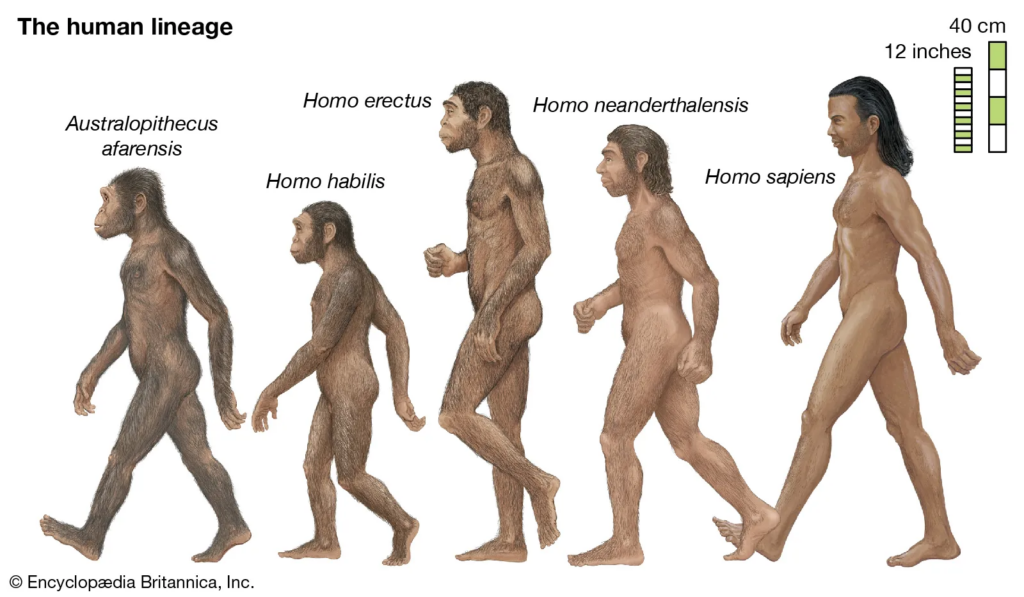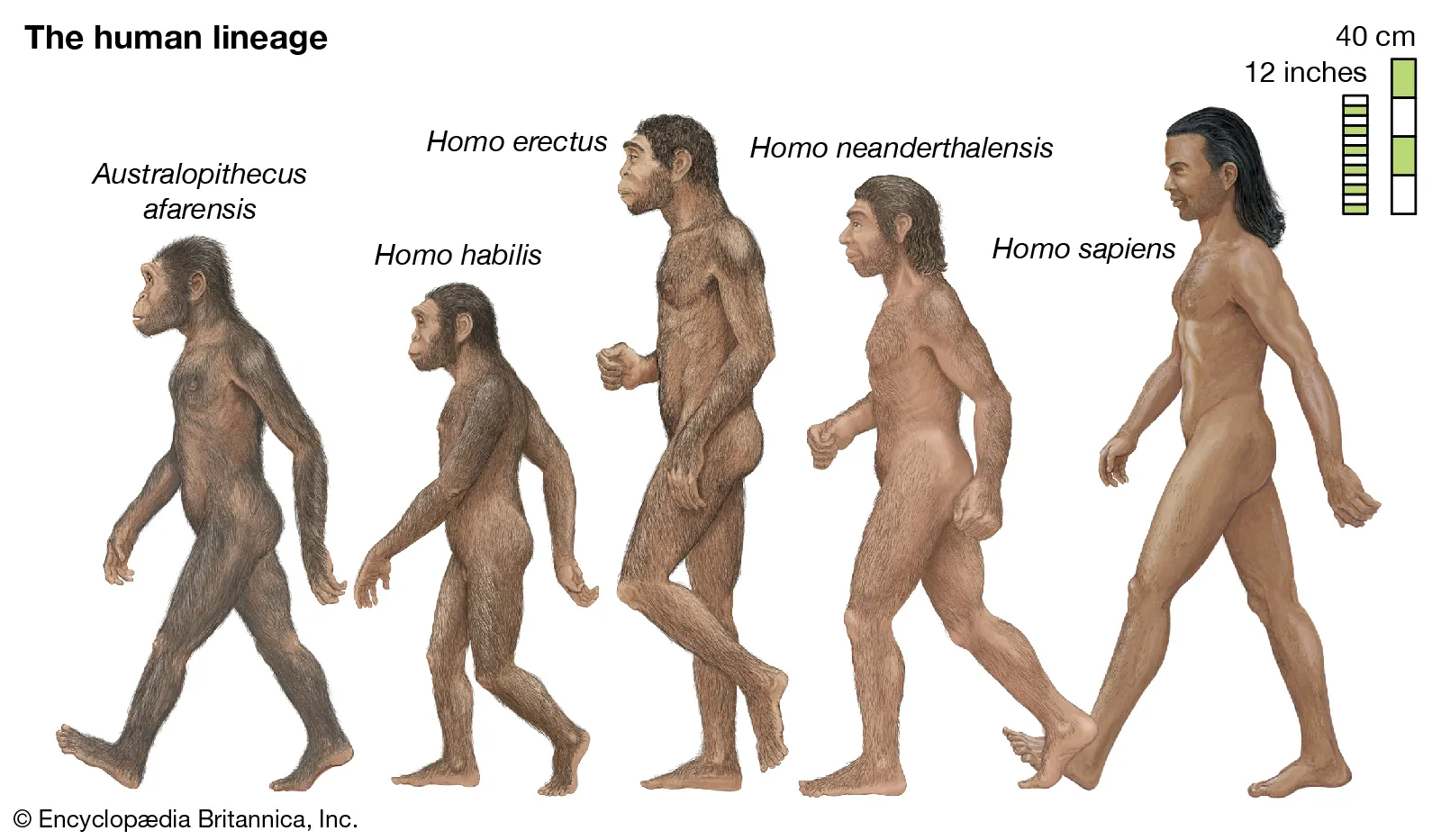Continues after advertising
In the grand tapestry of life, the evolution of species stands as one of nature’s most intricate and awe-inspiring processes. From the primordial origins to the diverse ecosystems we see today, the journey of evolution encompasses billions of years of gradual changes and adaptations. As we delve into this fascinating timeline, we will uncover the pivotal moments and key figures, such as Charles Darwin and Alfred Russel Wallace, whose groundbreaking ideas have shaped our understanding of biological evolution. This exploration invites you to embark on a journey through time, where each epoch reveals the secrets of life’s enduring adaptability. 🌍
Understanding the mechanisms that drive evolution is crucial not only for scientists but for all of us as stewards of the planet. With a professional and precise lens, we will examine the forces of natural selection, genetic drift, and mutation, which together weave the complex web of life. As we dissect these scientific concepts, you’ll find yourself at the heart of this narrative, as an essential participant in the ongoing dialogue about our origins and future. Are we mere spectators of this grand process, or active contributors to its unfolding story?
Continues after advertising
By the end of this article, you’ll gain a clearer insight into the evolutionary processes that have sculpted the biosphere as we know it. We will address pressing questions: How did life begin? What forces continue to drive change? And most importantly, what does the future hold for the ever-evolving tapestry of life on Earth? Your curiosity will be the compass that guides this exploration, ensuring that you emerge not only informed but also inspired by the dynamic narrative of evolution. 🧬
The Timeline of Evolution: How Did We Get Here?
Understanding the journey of evolution is akin to tracing the footsteps of life itself. This timeline, spanning billions of years, encapsulates the triumphs, adaptations, and transformations that have shaped all living organisms on Earth. Let’s explore this fascinating journey, where each epoch has a story to tell.
Continues after advertising
The Origin of Life 🌱
The origins of life date back to approximately 3.8 billion years ago, in a primordial Earth with harsh conditions. But how did life begin in such an environment?
The Primordial Soup Theory
One of the prevailing theories suggests that life began in a “primordial soup,” a nutrient-rich mixture of organic molecules. These molecules, through chemical reactions possibly sparked by lightning or UV radiation, led to the formation of simple life forms.
– Example: Amino acids, the building blocks of proteins, have been shown to form under simulated early Earth conditions.
The Role of Hydrothermal Vents
Another hypothesis posits that life could have originated at hydrothermal vents on the ocean floor. These vents provide a unique combination of heat and chemicals that could support life.
– Insight: Extremophiles, organisms thriving in extreme conditions, are believed to resemble the early life forms that might have originated at these vents.

The Cambrian Explosion 🌊
About 541 million years ago, the Cambrian Explosion marked a pivotal point in evolutionary history. This period saw a rapid increase in the diversity of life forms. But what caused this sudden explosion of life?
Environmental Changes
The Cambrian Explosion coincided with significant changes in Earth’s environment, including increased oxygen levels in the oceans. This allowed for more complex organisms to evolve.
– Argument: Higher oxygen levels could have enabled the development of larger, more energy-demanding organisms.
Evolutionary Innovations
During this period, many major groups of animals first appeared in the fossil record. The development of hard body parts, such as shells and exoskeletons, provided new evolutionary advantages.
– Detail: The appearance of predators and the resulting evolutionary arms race drove rapid adaptations and diversification.
The Age of Reptiles 🦖
Moving forward in time, the Mesozoic Era, known as the Age of Reptiles, was dominated by dinosaurs. What factors contributed to their dominance?
Adaptive Radiation
Dinosaurs underwent adaptive radiation, diversifying into a wide range of forms and sizes, occupying various ecological niches.
– Example: From the gigantic long-necked sauropods to the fierce predators like Tyrannosaurus rex.
The Rise of Mammals
While dinosaurs ruled the land, early mammals coexisted with them, often in marginal environments. These mammals were small, nocturnal, and evolved specialized traits to survive.
– Insight: The traits developed during this era, such as endothermy (warm-bloodedness), laid the foundation for future mammalian success.
The Evolution of Humans 👣
The journey of human evolution is a complex and intriguing story, marked by critical developments and innovations.
The Great Apes and Hominins
Humans share a common ancestor with modern great apes. The divergence of hominins from this lineage marks the beginning of our direct evolutionary path.
– Argument: Changes in climate and environment may have driven hominins to adapt bipedalism, freeing their hands for tool use.
The Cognitive Leap
One of the defining characteristics of human evolution is the development of advanced cognitive abilities. But what sparked this leap?
– Detail: The use of tools, development of language, and complex social structures likely played significant roles in shaping human intelligence.
Frequently Asked Questions
How do scientists study the timeline of evolution?
Scientists use various methods to study evolution, including the fossil record, genetic analysis, and comparative anatomy. These tools help piece together the evolutionary history of life on Earth.
What is the significance of mass extinctions in evolution?
Mass extinctions, while devastating, often pave the way for new life forms to evolve and fill the vacated ecological niches. This process can drive significant evolutionary change.
- Mass extinctions reset ecological landscapes.
- They often lead to adaptive radiations and new evolutionary paths.
- Examples include the rise of mammals post-dinosaur extinction.
This timeline of evolution is a testament to the resilience and adaptability of life, offering a window into the past and insights into the future. The journey of evolution continues to be a source of wonder and discovery, inviting us to delve deeper into the story of life on Earth.
Conclusion
In conclusion, “The Timeline of Evolution: How Did We Get Here?” provides an insightful journey through the complex and fascinating history of life on Earth. This exploration not only underscores the intricacies of evolutionary processes but also highlights the remarkable adaptability and resilience of life. Understanding evolution is crucial, as it forms the foundation of modern biology and informs various fields, from medicine to environmental science. By grasping these evolutionary milestones, we appreciate the interconnectedness of all living organisms and the delicate balance that sustains life on our planet.
As we reflect on this evolutionary timeline, we are invited to consider our place within this vast history. How can we, as custodians of Earth, ensure the preservation and continuation of the diverse life forms that share our world? 🌍 This reflection not only fosters a deeper appreciation for the scientific endeavor but also encourages proactive engagement in conversations about sustainability and conservation.
Thank you for investing your time in exploring these critical insights. Your engagement enriches the dialogue around evolution and its implications for our future. What new questions has this timeline inspired in you? Share your thoughts and continue the conversation below!

